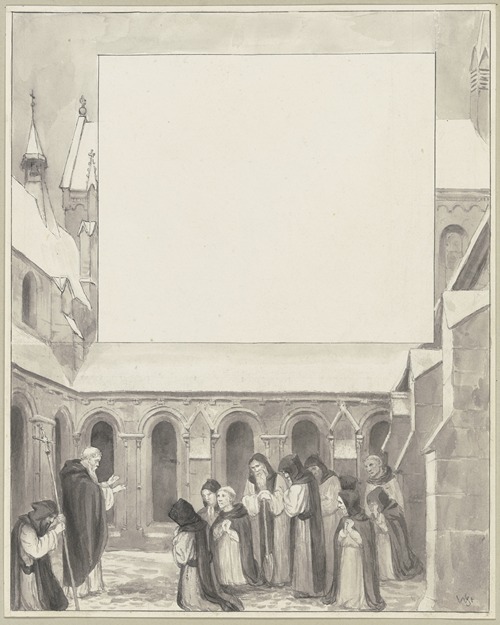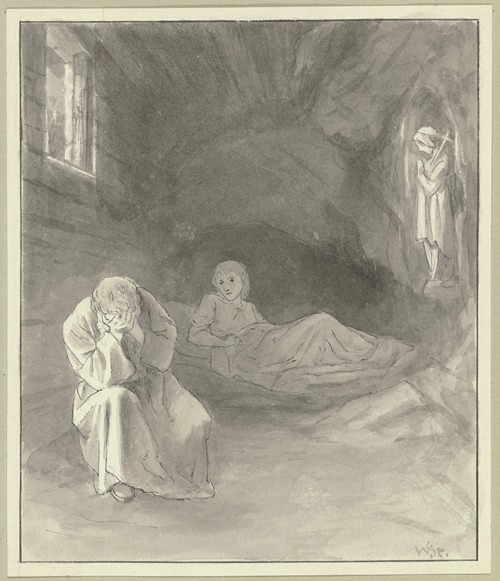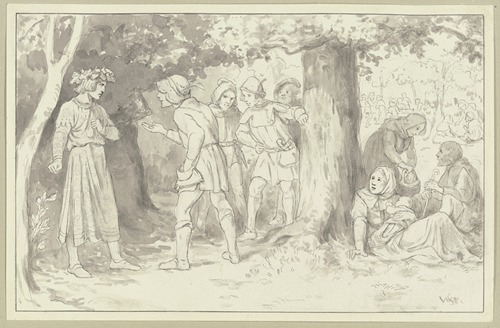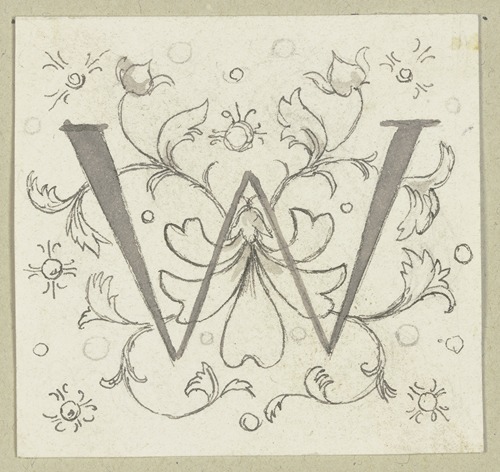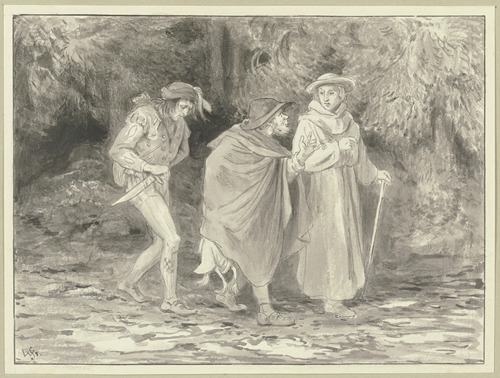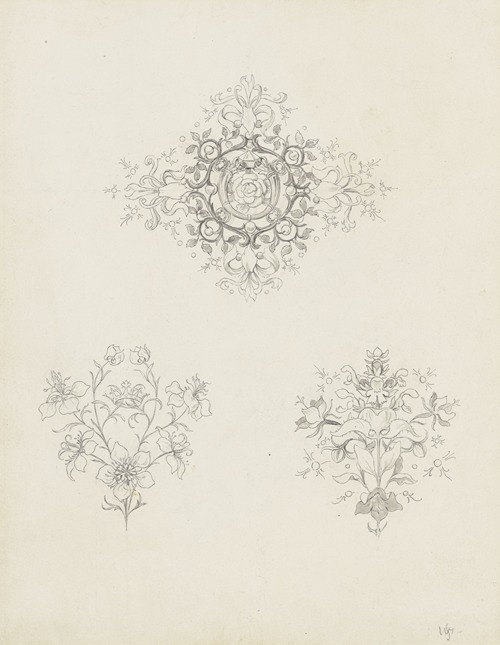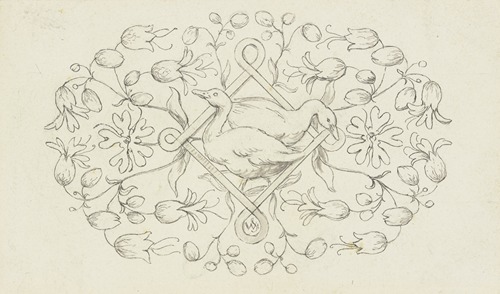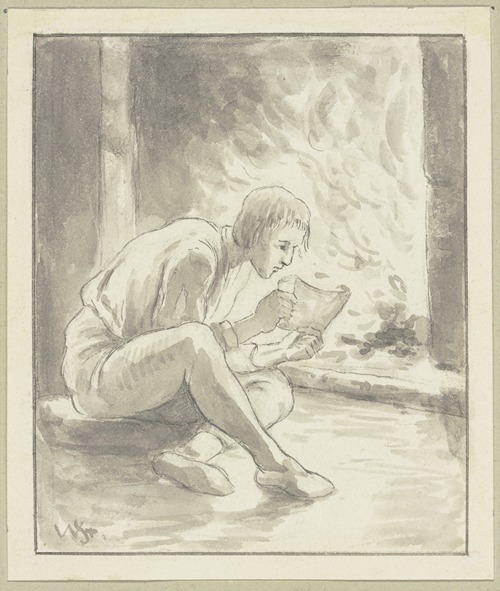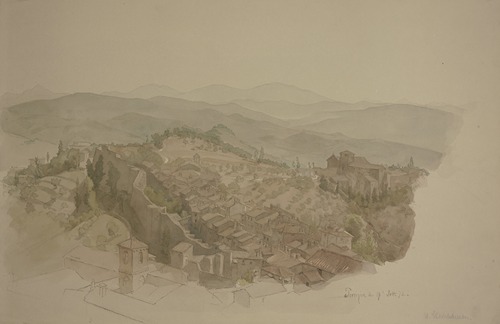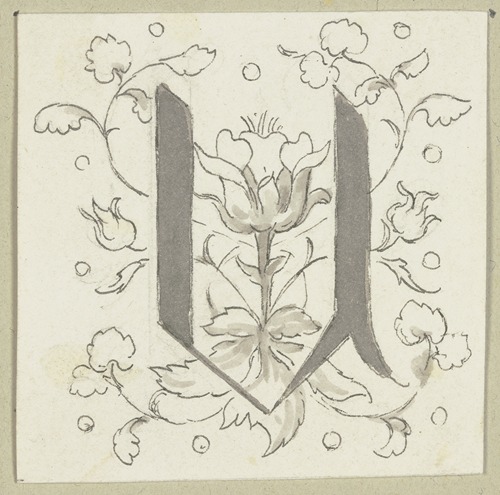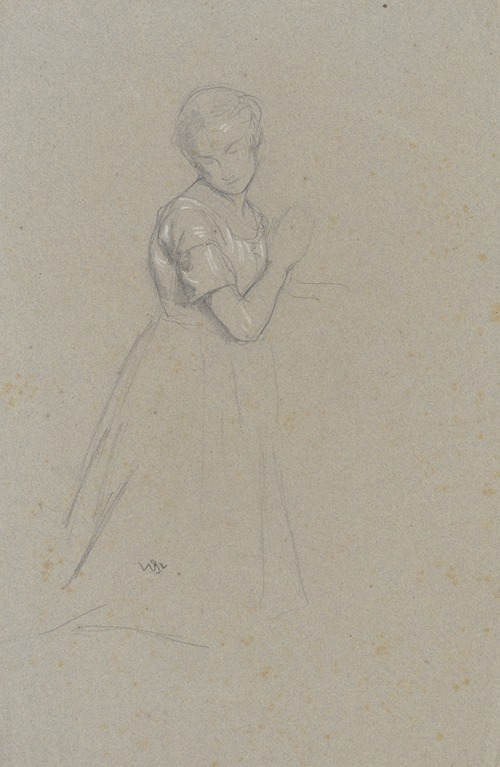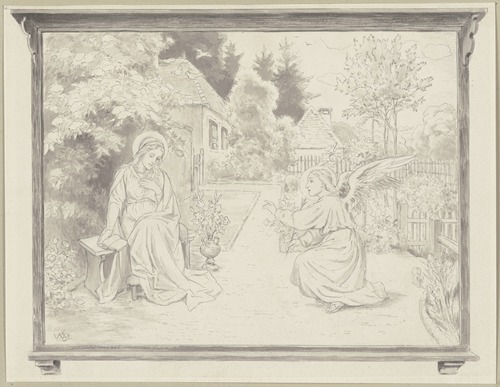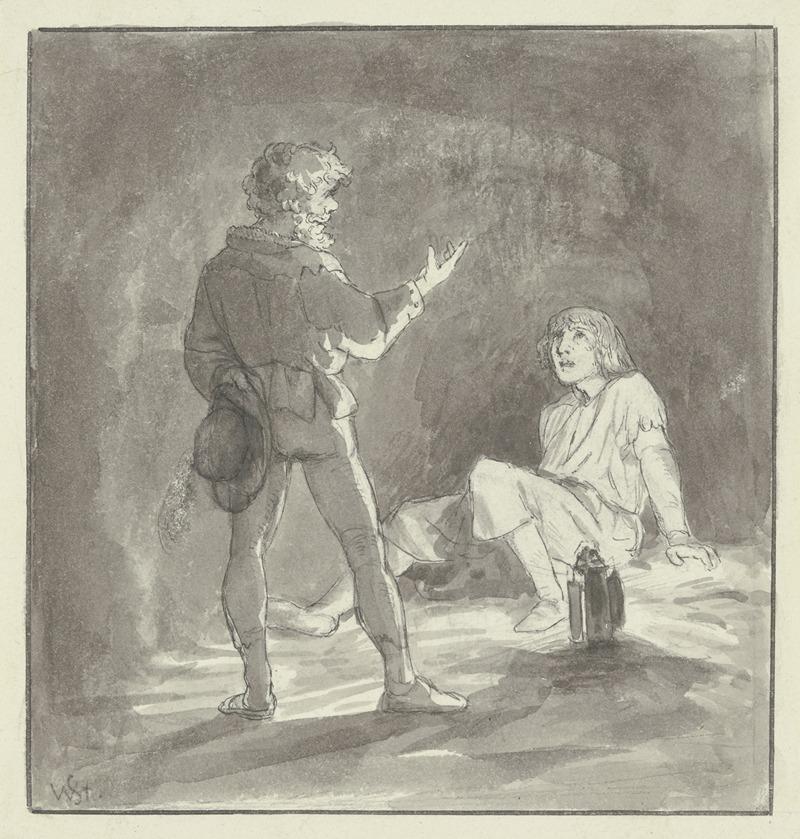
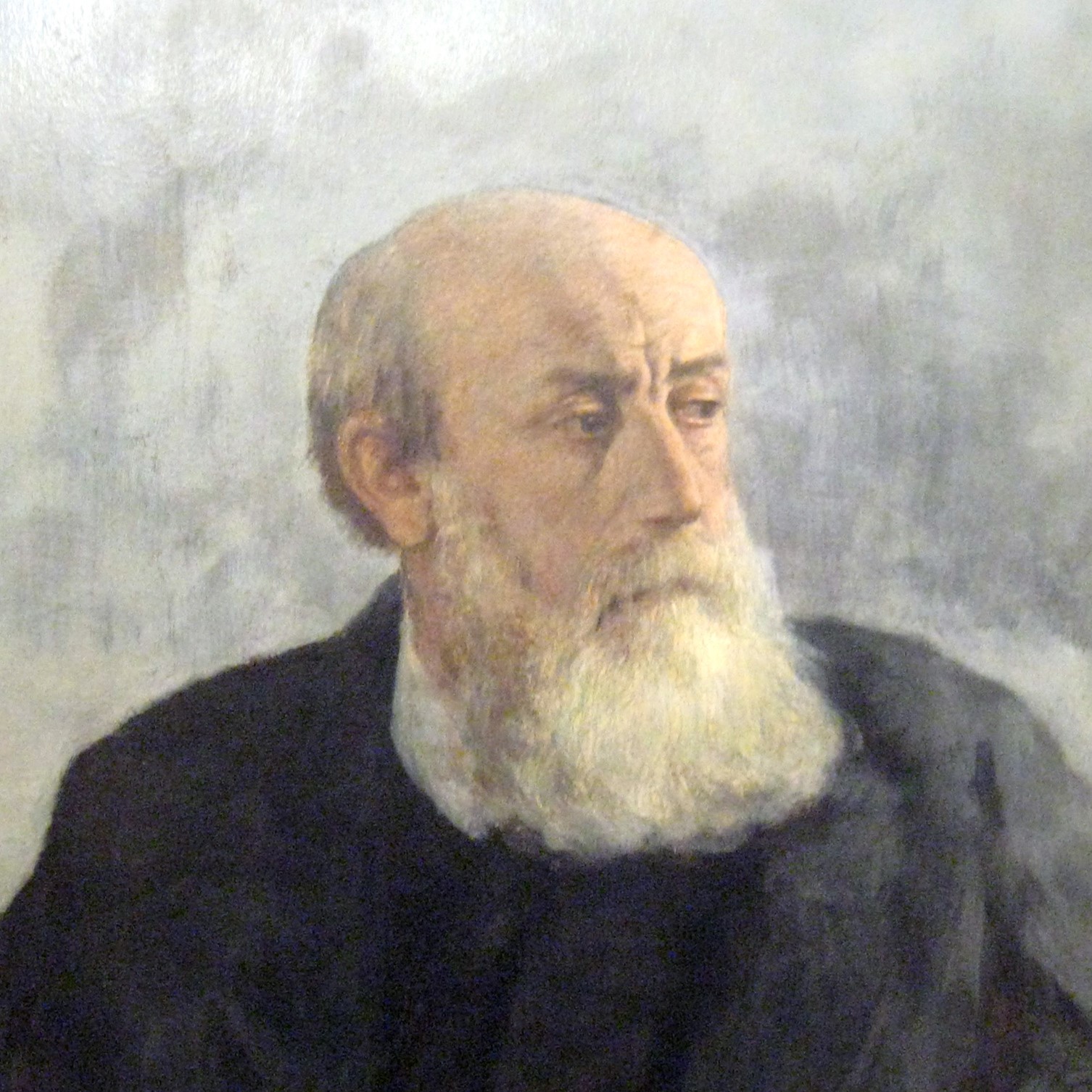
Wilhelm August Theodor Steinhausen was a German painter and lithographer.
Steinhausen was the youngest son of the Sorau ophthalmologist and garrison doctor August Friedrich Wilhelm Steinhausen and his wife Henriette Auguste, née Naphtali, who converted to Protestantism when she married as a Jew by birth. Steinhausen's talent became apparent early on.
After finishing school, Steinhausen began studying art at the art academy in Berlin. There, together with Hans Meyer, he became a student of Eduard Daege , Eduard Holbein and Julius Schrader. Steinhausen actually wanted landscape painting to be his main focus of study; But since only figure painting was currently offered, he enrolled in this subject.
In the fall of 1866, Steinhausen moved to the art academy in Karlsruhe. There he was, among other things, Student of Ludwig Descoudres and Hans Canon. There in Karlsruhe he met Hans Thoma and became friends with him. A retreat in the Cistercian monastery in Maulbronn in 1868 reinforced Steinhausen's artistic focus on the religious genre.
After his mother's death, Steinhausen returned to Berlin in 1870. It was created here, among other things, the design for a glass window in Geber's villa. Steinhausen met Ludwig Richter and worked with him for a short time in Loschwitz. The “Michael Beer Scholarship for History Painting,” which was awarded to him in 1871, enabled him to study for a longer period of time in Italy. There he is also influenced by Giotto's frescoes. After his return, Steinhausen settled in Munich in February 1873 as a freelance artist.
In 1876 Steinhausen met the painter Friedrich Geselschap, who introduced him to the Frankfurt architect Simon Ravenstein. In November of the same year Steinhausen went to Frankfurt. There he met Peter Burnitz through Thoma. The interiors of many villas were created in the following years, partly in collaboration but also alone.
In 1880 Steinhausen married Ida Wöhler from Berlin. Steinhausen had six children with her, including: Marie Paquet Steinhausen. Six years later, the family moved into their own villa, the current Steinhausen House. This domicile was part of an artists' settlement that the architect Ravenstein designed and built. He was his friend Thoma's neighbor there for years.
Steinhausen was a member of one of the oldest German artists' associations, the Frankfurt Artists' Society , which also exhibited many of his works.
In 1910, Steinhausen acquired Schöneck Castle in the Hunsrück , which became the artist's summer residence. However, from 1913 onwards Steinhausen was not able to share this place with his wife as he had hoped. She became increasingly ill and for a long time. He himself suffered a stroke in the spring of 1919 and another in 1920 and was in need of nursing care, which ended his artistic work. Two of his daughters provided ongoing care at Schöneck Castle.
Ida Steinhausen died on November 19, 1923, and Wilhelm Steinhausen died on January 5, 1924.
